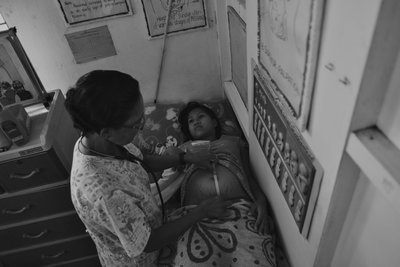
Typhoon Yolanda swept across the Philippines severely damaging many birthing clinics, general health facilities, medical equipment and supplies. Many health staff were victims of the typhoon themselves, meaning the delivery of maternal and child health services was greatly affected in the period immediately after the typhoon. Severe damage to critical infrastructure such as roads and bridges aggravated the situation, and even where birthing facilities were available, access to these was made very difficult.
The WHO conducted a comprehensive stock-take of the available maternal and child health services, facilities and human resources in Region VIII including undertaking mapping to determine accessibility of facilities.
To address the issues raised in the stock-take WHO procured and distributed equipment and supplies and has organized the training of health care workers. WHO has also been training health workers on the Essential Intrapartum Newborn Care (EINC) program which provides the essentials of newborn care that can avert approximately 70% of newborn deaths.
Over 15 000 babies were expected to be born each month with approximately 137 000 pregnant women and 91 000 breastfeeding mothers across the typhoon affected areas. Health care personnel in Leyte reported a rise in numbers of deliveries in July 2014 and prenatal consultations in the preceding months indicating a potential baby boom one year after the typhoon. Post disaster more adolescents could be exposed to early sexual activity resulting in a greater number of adolescent pregnancies that need more intense pre natal care; and their babies also needing more neonatal care.
Reproductive, maternal, and child health services are not often prioritized following emergencies. However, with the experience of typhoon Yolanda, activities that took place following the typhoon began prioritizing reproductive, maternal, and child health in emergencies to address additional concerns and enhance resiliency one year on.
